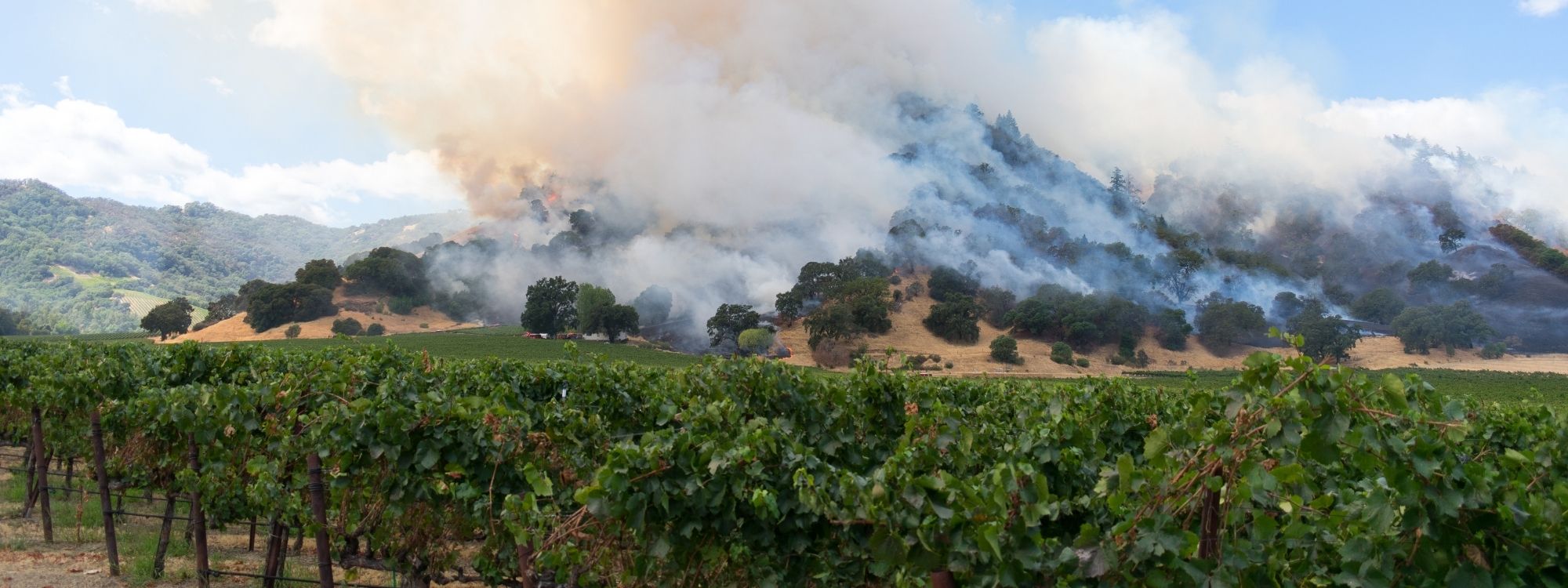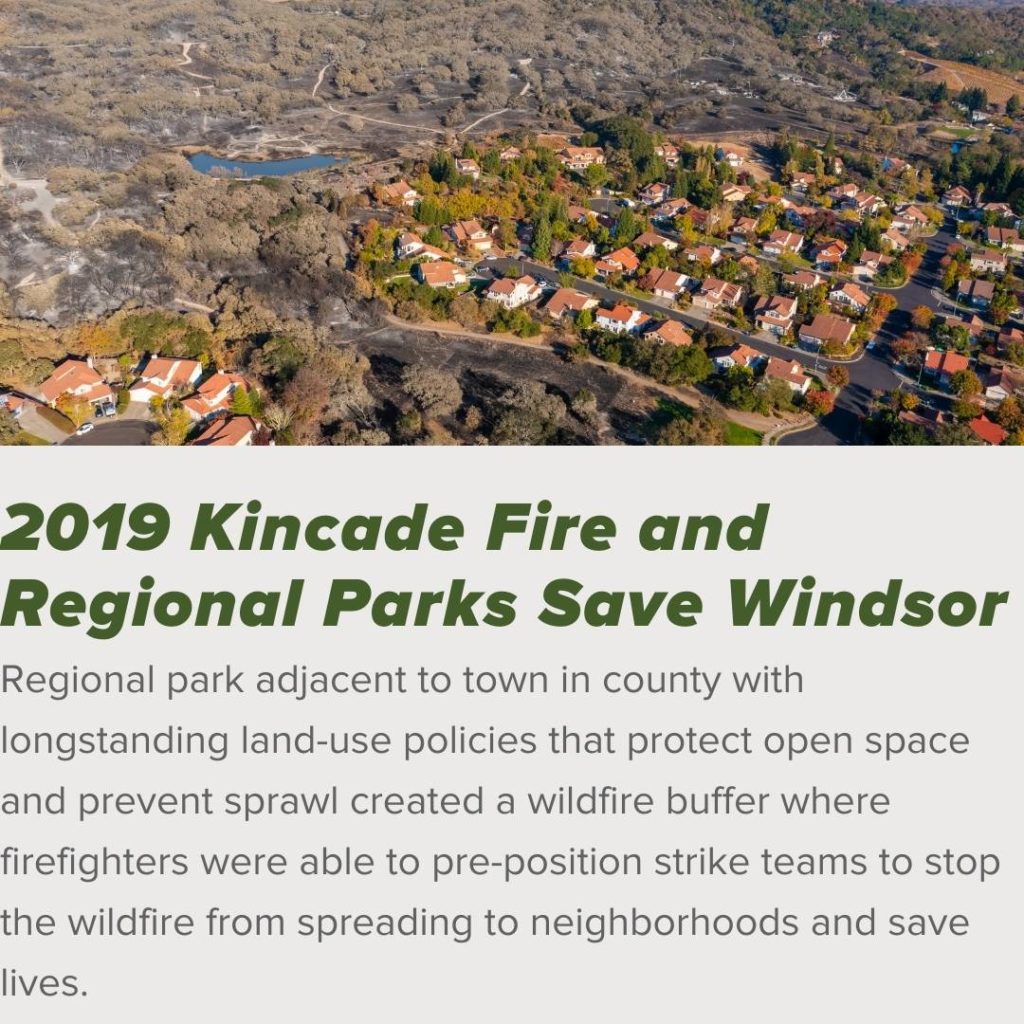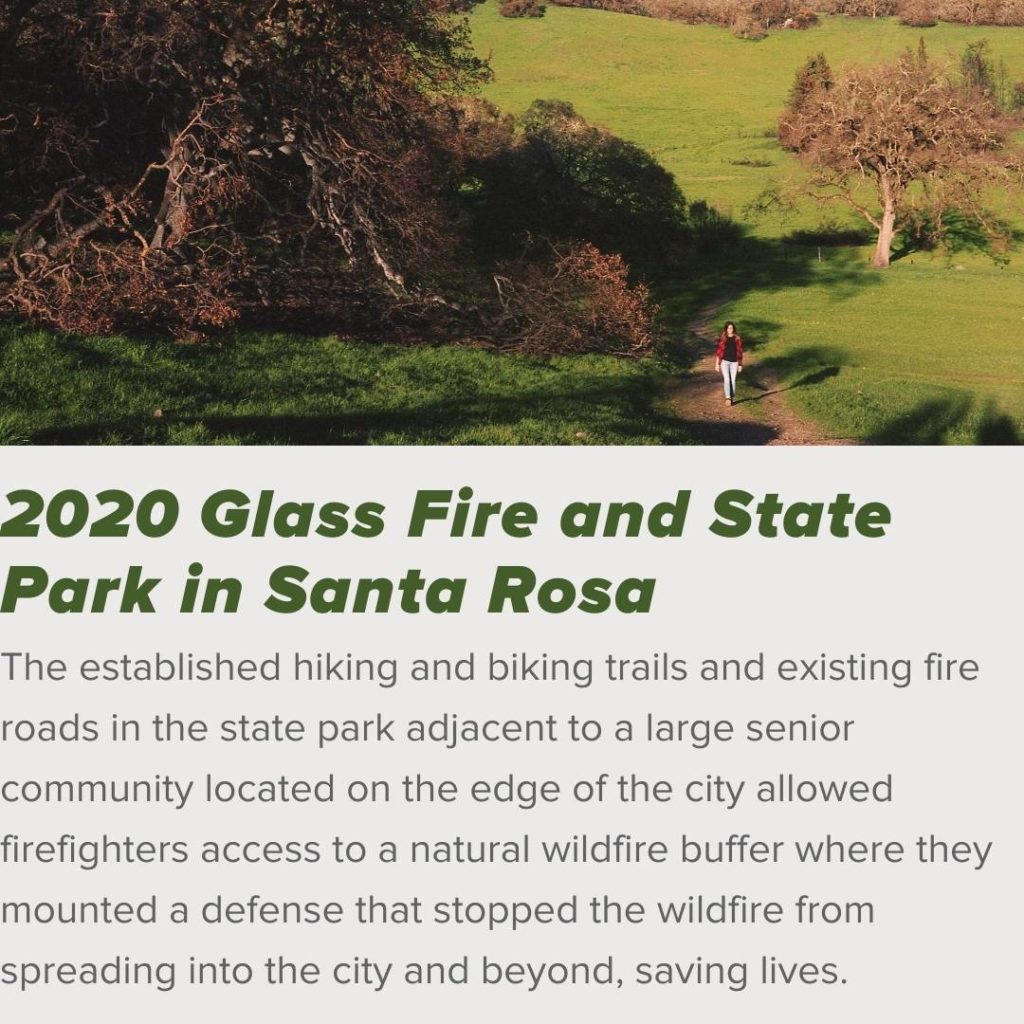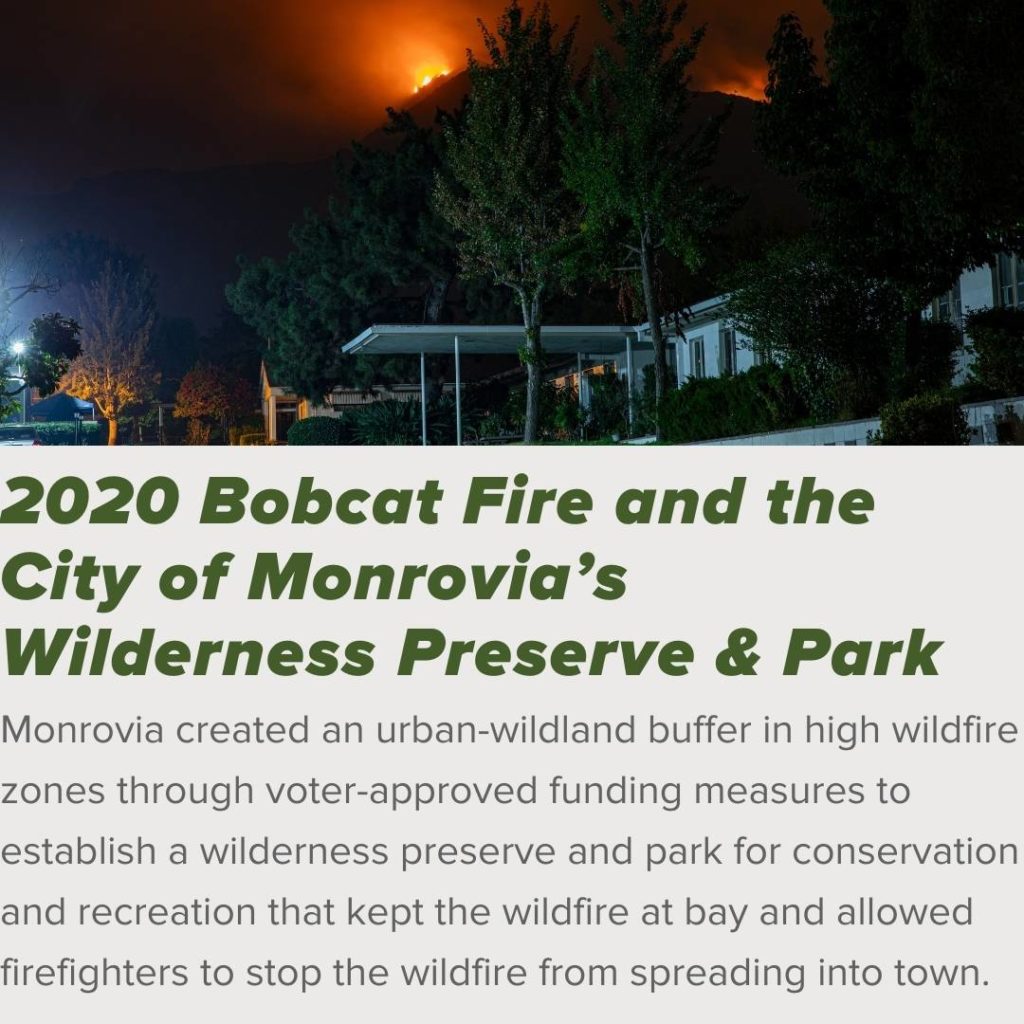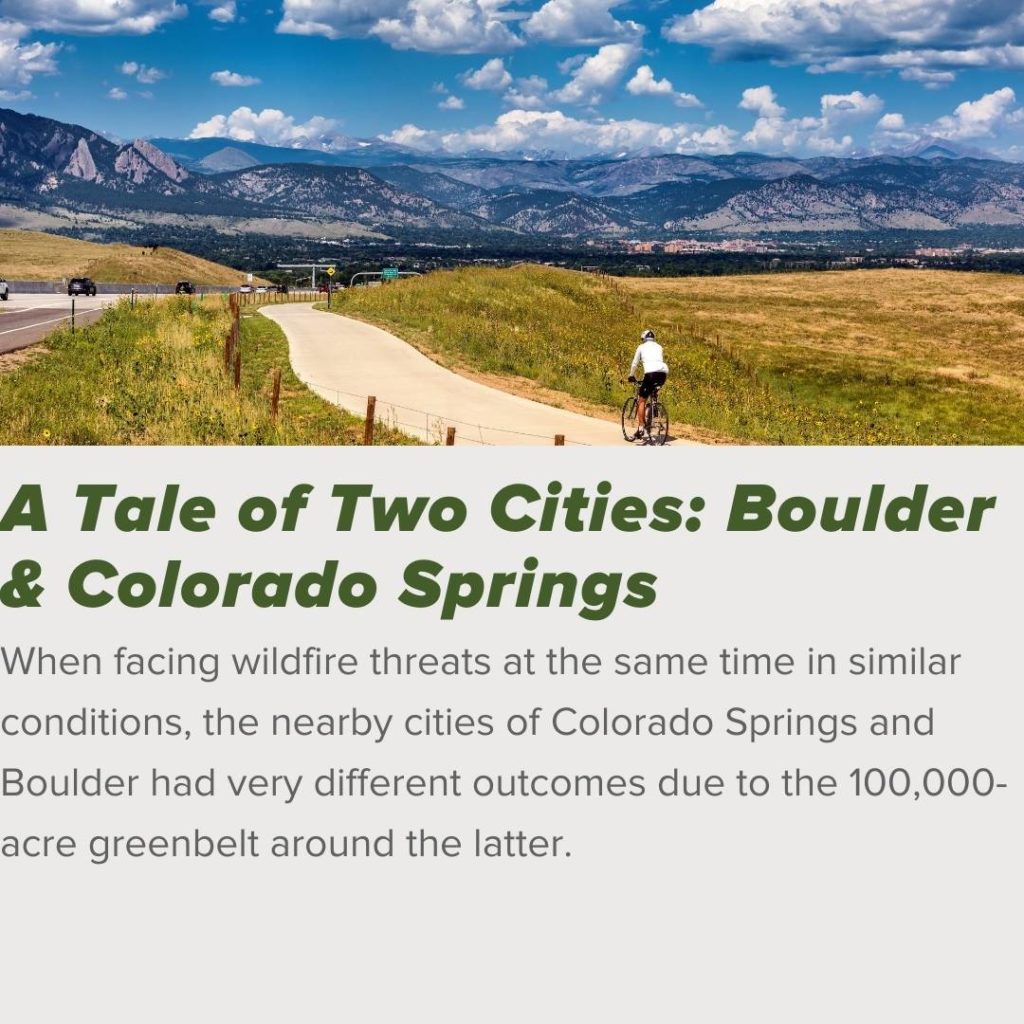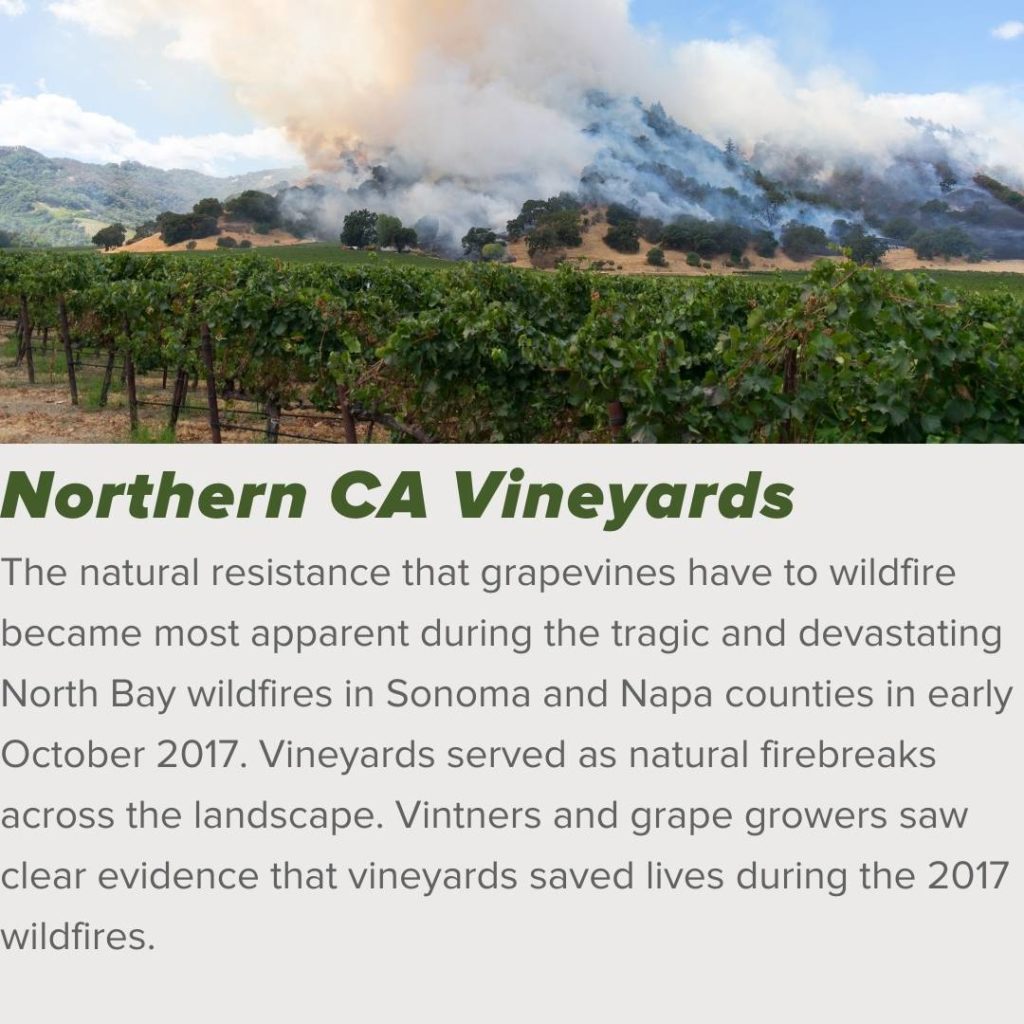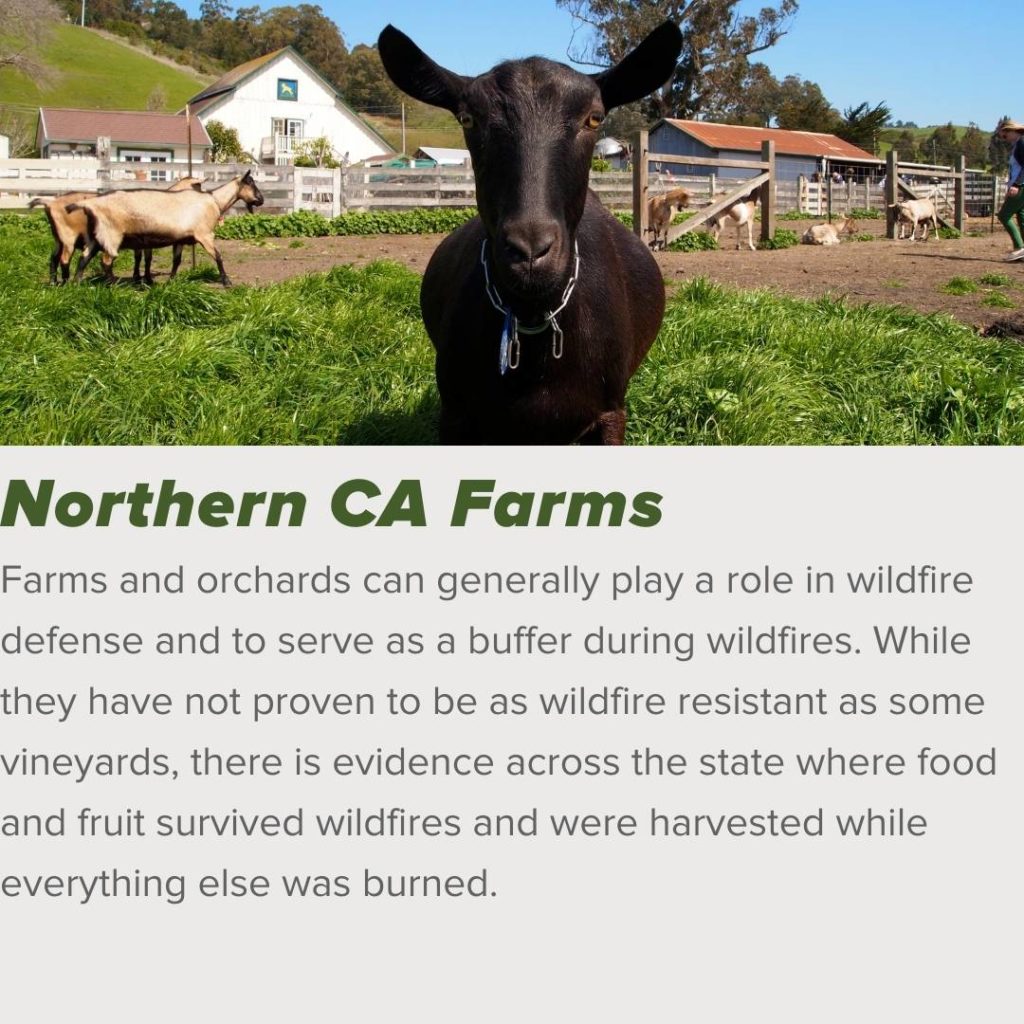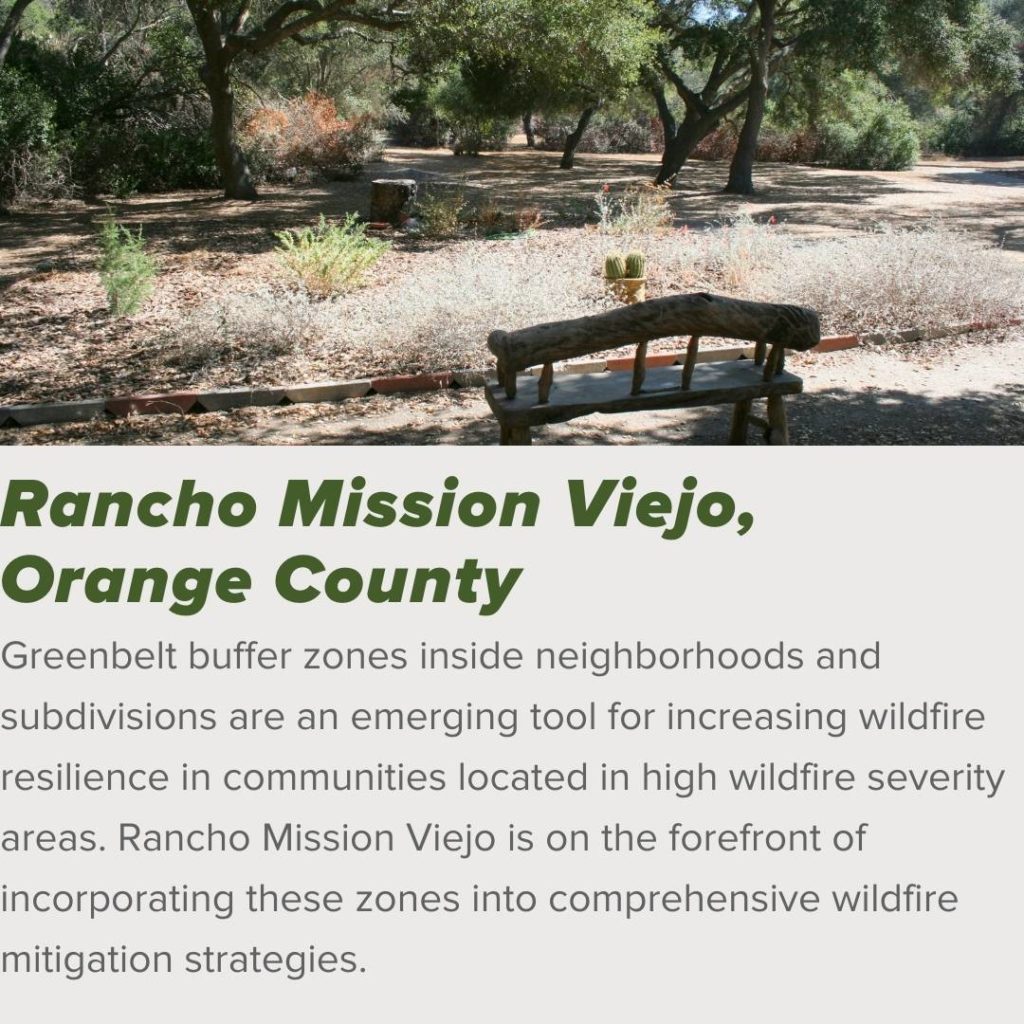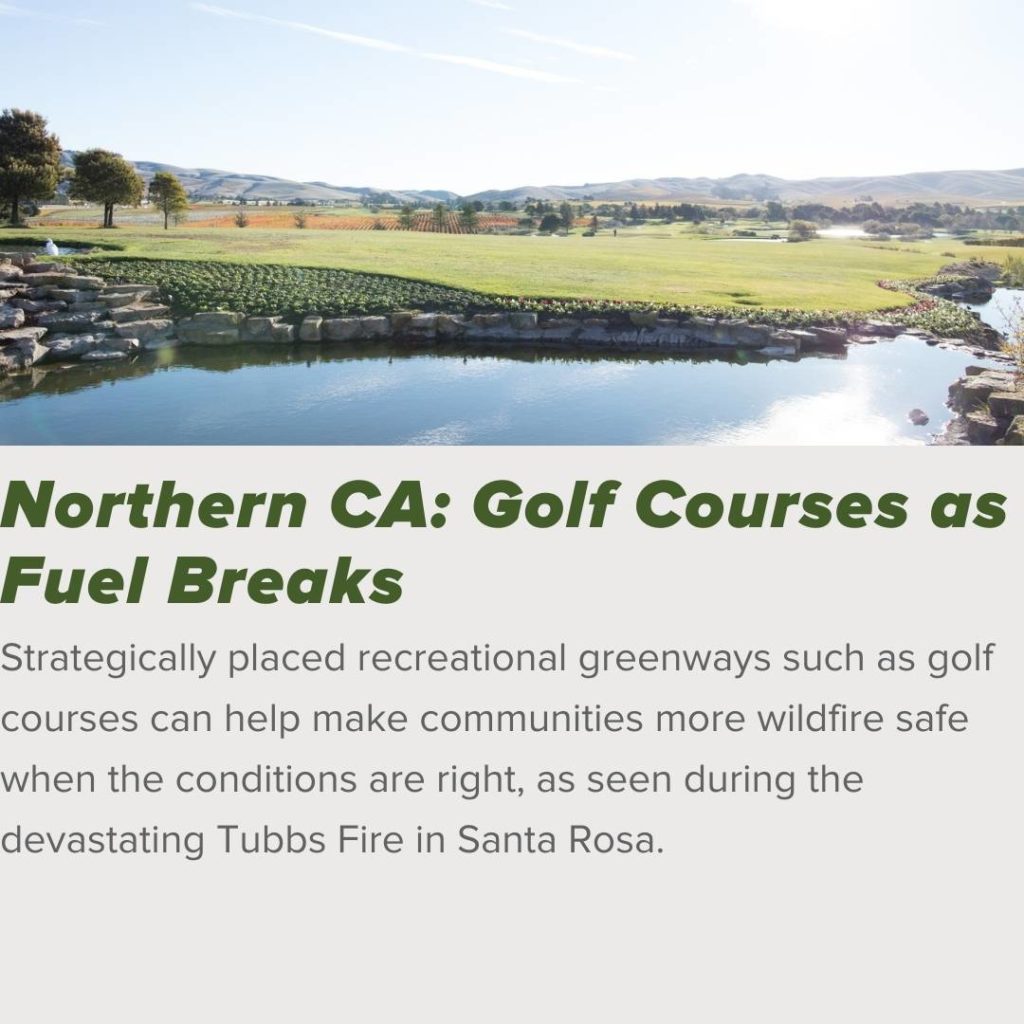Wildfire season has arrived earlier than ever this year and is already showing promise to surpass the destruction of 2020. Between January 1 and July 4, there were 4,599 fires that burned 114.8 square miles, according to the California Department of Forestry and Fire Protection, which represents a spike of 136% in terms of area burned compared to the same period last year.
While drought, heatwaves, and wildfires are dominating the headlines, these extreme trends are likely to become California and the Bay Area’s new reality. However, there are multiple solutions that can be adopted to improve how we co-exist and bounce back better from these events. This becomes all the more urgent when more people start living closer to the edges of forest and wildlands—called the Wildland-Urban Interface (WUI). Over 30% of California’s population live in the WUI, and more pressure for sprawl development in these areas threatens to put more lives and infrastructure in the path of wildfires. The single biggest risk factor driving loss of lives and homes to wildfires is the location and arrangement of homes in high fire risk lands in the Wildland-Urban Interface (WUI).
The Bay Area is uniquely positioned to leverage natural resources—such as greenbelts—as a potent solution to improve resilience to extreme wildfire, and we think there is huge potential to accelerate this approach.
What Is a Greenbelt? Read more here.
Greenbelts’ Role in Reducing Wildfire Risk & Building Resilience
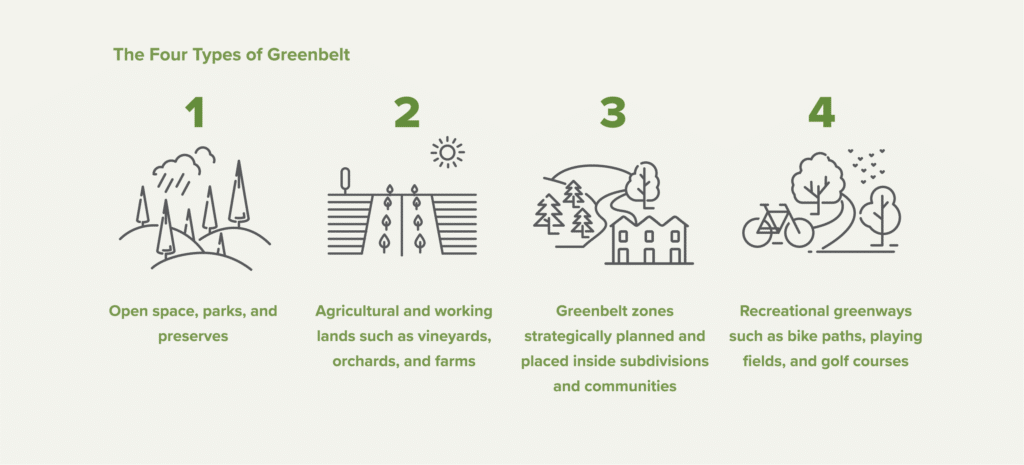
That’s one of the main takeaways from our recently published white paper, The Critical Role of Greenbelts in Wildfire Resilience, where we document ample evidence that greenbelts can and do play a role in reducing the loss of life and home in extreme wildfire events while increasing wildfire resilience in communities and across landscapes. They play a beneficial role in reducing wildfire risk and improving resilience in several ways:
- Serving as strategic locations for wildfire defense
- Acting as natural wildfire buffers to create separation from wildlands
- Increasing overall wildfire resilience through land stewardship
- Conserving biodiversity in fire adapted lands while reducing wildfire risk
- Providing wildfire resistant green spaces inside and surrounding neighborhoods
Our findings and discussion are grouped by four greenbelt types with examples to make the case for greenbelts’ role in wildfire resilience. Learn how these nature-based solutions can be used to improve our region’s preparedness and response to wildfire:
1. Open Space, Parks, and Preserves
Lands in close proximity to high wildfire risk communities such as existing parks, open spaces, and preserves can serve multiple functions to reduce wildfire hazards and risk. From our research, these natural greenbelts demonstrated the strongest role and potential for reducing risk to lives and homes from wildfire and increasing wildfire resilience as follows:
- Serving as strategic locations for wildfire defense
- Acting as natural wildfire buffers for communities to create separation from wildlands
- Increasing overall wildfire resilience through land stewardship
- Conserving the high biodiversity found on high wildfire risk lands
Making the Case for Open Space, Parks, and Preserves:
Check out the full case studies in the white paper.
2. Agricultural Lands
Agricultural lands have played a significant role in reducing wildfire risk and damages to homes and communities during wildfires by serving as strategic locations for wildfire defense, as natural wildfire buffers to create separation from wildlands, and by increasing overall resilience through land management and conservation.
While these types of lands can and do burn, they can also serve as a natural fuel break to shield neighboring homes and communities from wildfires that usually originate in nearby wildlands.
“What we have found in Sonoma County is that certain types of agricultural crops, particularly permanent crops like vineyards, the fire does not burn in the same way at all. As a matter of fact, we saw some areas where the fire completely avoided the vineyard and then went a different route,” shared Misti Arias, Sonoma’s Open Space General Manager, during the white paper’s webinar launch to share the findings of our research. “We’re looking at opportunities to continue to enhance and increase the amount of food production on these urban edges because it creates direct access to local healthy foods and also helps create a management style that is less impactful for fire.”
Making the Case for Agricultural Lands:
Check out the full case studies in the white paper.
3. Greenbelt Buffer Zones
Integrating intentional and strategically placed greenbelt buffer zones into community design within neighborhoods and subdivisions can increase wildfire resilience. Establishing greenbelt buffer zones with fire-resistant landscaping in between clustered homes can serve as defensible space for both firefighting and reducing the chances that embers from an approaching wildfire will land on homes. It can also reduce home-to-home ignition between blocks of homes, as that is often the main cause of the destruction of neighborhoods, not the wildfire flames.
Such greenbelt features can also slow or stop wildfires or cause them to change directions. In some cases, they can provide refuge for residents who need to evacuate. Project design is an important determinant of wildfire ignition risk and the scale of wildfire spread in greenbelt buffer zones.
Greenbelt zones are carefully landscaped areas inside part of the community or development, not surrounding it.
Making the Case for Greenbelt Buffer Zones:
Check out the full case studies in the white paper.
4. Recreational Greenways
Greenways such as recreational playing fields, golf courses, and bike and walking paths in and around communities can also be leveraged in preventing wildfire spread into communities and serve to aid in firefighting. If placed strategically in and around neighborhoods, the water and moisture contained in irrigated recreational lands can serve to slow or prevent wildfires from entering communities and provide areas for firefighters to defend homes and properties.
With high, gusty wind fires, embers can fly long distances, even miles, causing new and separate fires “downstream” from the main fire front. In instances of a very large green buffer, it can lessen the likelihood that an ember would land in a subdivision.
Van Butsic, a researcher at UC Berkeley, recommends that new subdivisions located in the WUI include greenbelts as a risk defense strategy (read more in our exclusive interview with Van Butsic). Additionally, research conducted in the San Diego area found that using fire-resistant landscaping in open areas around homes was more effective in reducing wildfire risk than the thinning or removal of trees and bushes. This may suggest that greenways could serve as a better mechanism to reduce fire risk than defensible space alone.
Making the Case for Recreational Greenways:
Check out the full case studies in the white paper.
Get the complete analysis, more details, and policy recommendations by downloading The Critical Role of Greenbelts in Wildfire Resilience today.
Learn more about the work Greenbelt Alliance is doing to implement innovative land-use policies and collaborate at the state, regional, and local levels to change our relationship to wildfire here.
Get email updates from Greenbelt Alliance!
Fill out the form below to receive email updates from Greenbelt Alliance—it’s the best way to stay up-to-date on our work throughout the Bay Area, get our latest outings calendar, and take action in your own community. We will never share, trade, or sell your email address. Read our privacy policy here.
Header Photo: George Rose via Sonoma County Winegrowers

